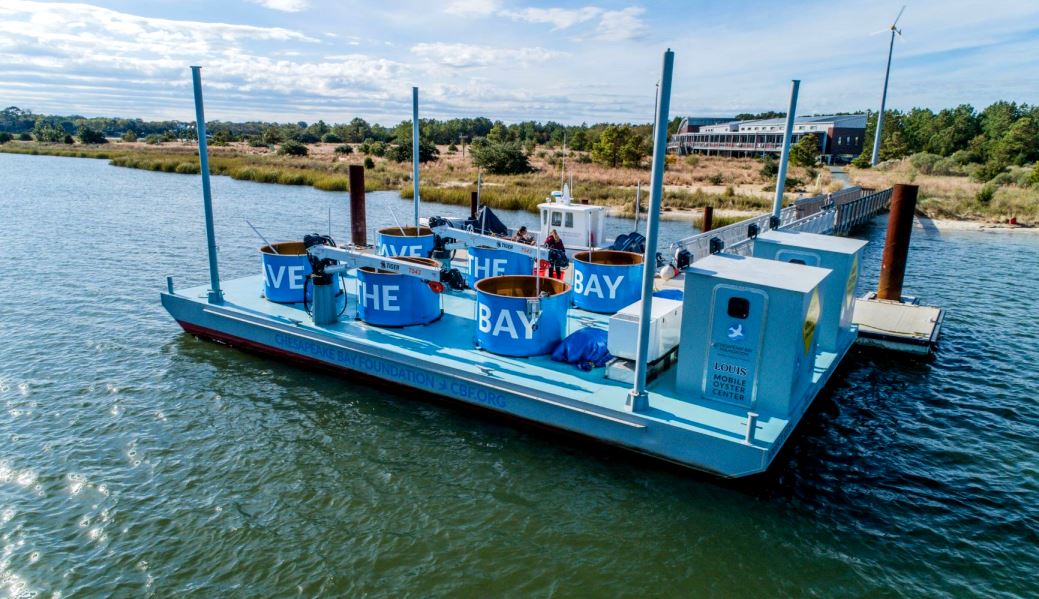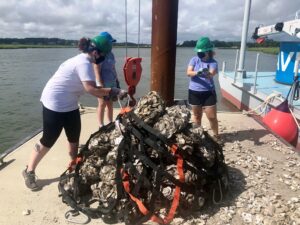In July of 2020, the Chesapeake Bay Foundation (CBF) this month put a cutting-edge floating oyster restoration facility into full operation, transforming how CBF helps bring back Virginia’s oyster population.
Officially called the Prudence H. & Louis F. Ryan Mobile Oyster Restoration Center, the creative new facility sits atop two barges that travel to rivers where oyster restoration is taking place, dramatically increasing efficiency.
CBF restoration experts and volunteers last week loaded recycled oyster shells into large tanks on the facility on the Lynnhaven River at CBF’s Brock Environmental Center in Virginia Beach. They then released 9 million oyster larvae into these tanks, which will attach onto the shells. CBF volunteer oyster gardeners will raise these baby oysters for planting on sanctuary reefs.
“After years of preparation, we’re now finally showing that we can raise oysters on a one-of-a-kind floating restoration center,” said CBF Virginia Oyster Restoration Manager Jackie Shannon.
“Our new oyster barge allows us to produce up to 15 million oysters per year, doubling our capacity in Virginia. We’ll also be able to educate and engage even more people by bringing an oyster restoration center to new communities across Tidewater Virginia,” she added.
This is the only mobile oyster restoration center operating on the Chesapeake Bay. The two linked barges hold six 850-gallon tanks filled with local river water where baby oysters attach, or “set,” to recycled shells or concrete reefballs. These are then planted on nearby sanctuary reefs.
Two cranes aboard are used to move recycled oyster shells and heavy concrete reef balls, which quickly build three-dimensional oyster habitat.
Previously these baby oysters would need to be driven from a separate restoration center to the rivers where work was taking place. The new barges will allow the majority of oyster–setting to take place on the very same rivers where restoration is occurring. Reducing travel time and using local river water in tanks will help ensure healthy, well-adjusted oysters.
These oysters will contribute to the Chesapeake Oyster Alliance’s ambitious goal to add 10 billion oysters to the Bay by 2025.
The first stop for the oyster barge is the Lynnhaven River, the current focus of oyster restoration efforts in Hampton Roads. In the future the oyster barge may travel to other rivers targeted for oyster restoration, such as the Elizabeth River, York River, and the Piankatank River.
At each location, CBF will work with the local community to find a location that works well for both neighbors and the surrounding environment.
This project was made possible thanks to financial support from Prudence and Louis Ryan, the Hampton Roads Community Foundation, and the Marietta M. & Samuel T. Morgan Trust.
Featured photo courtesy of Terry Young/Air Aspects.


